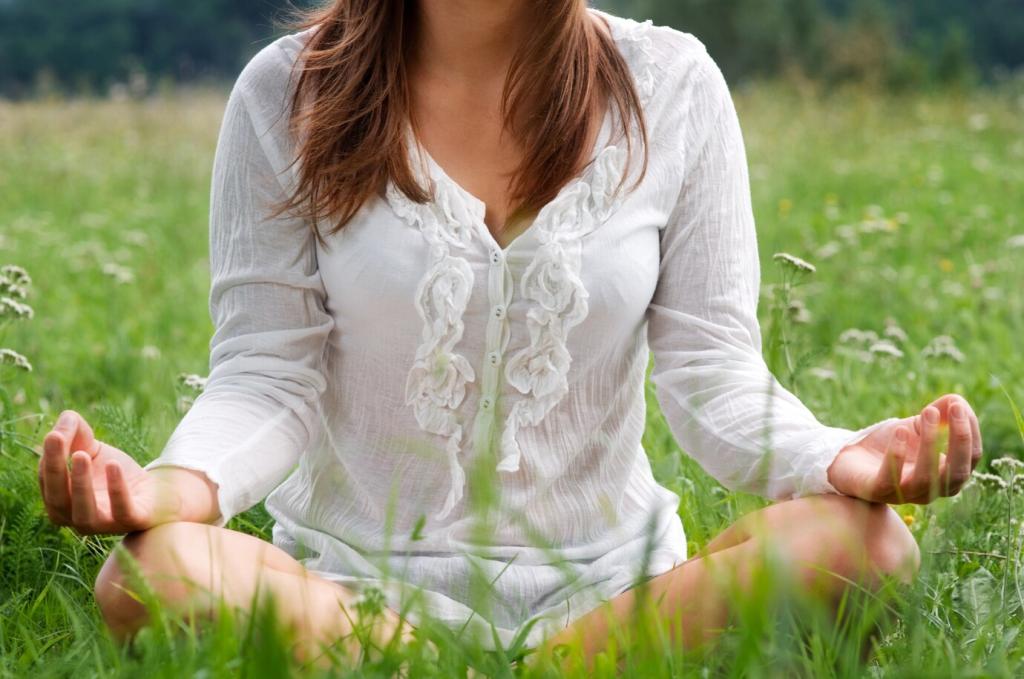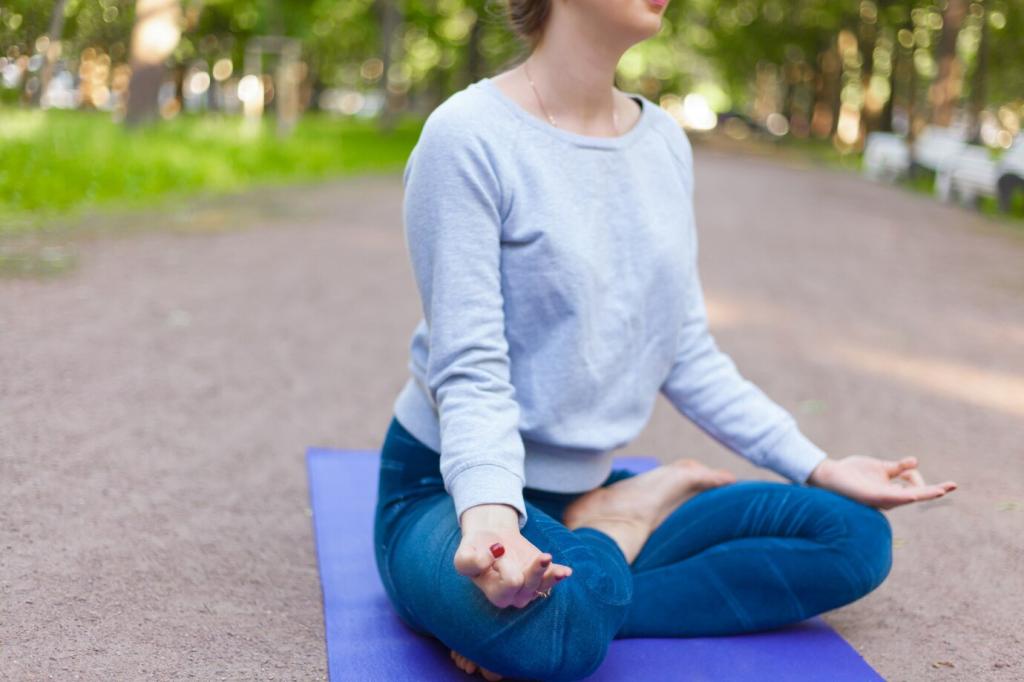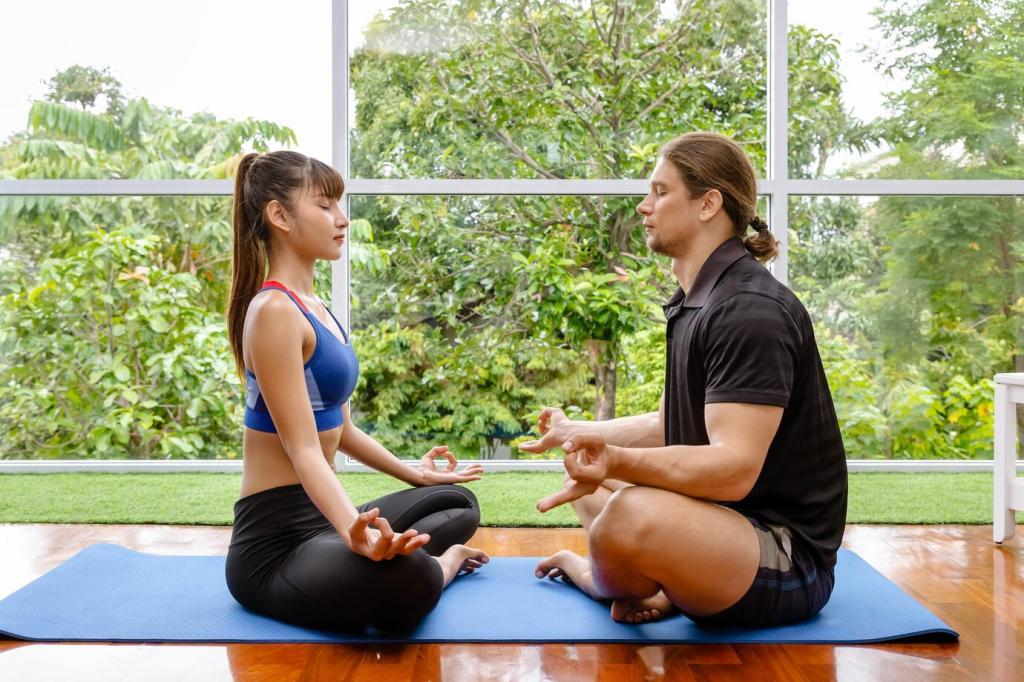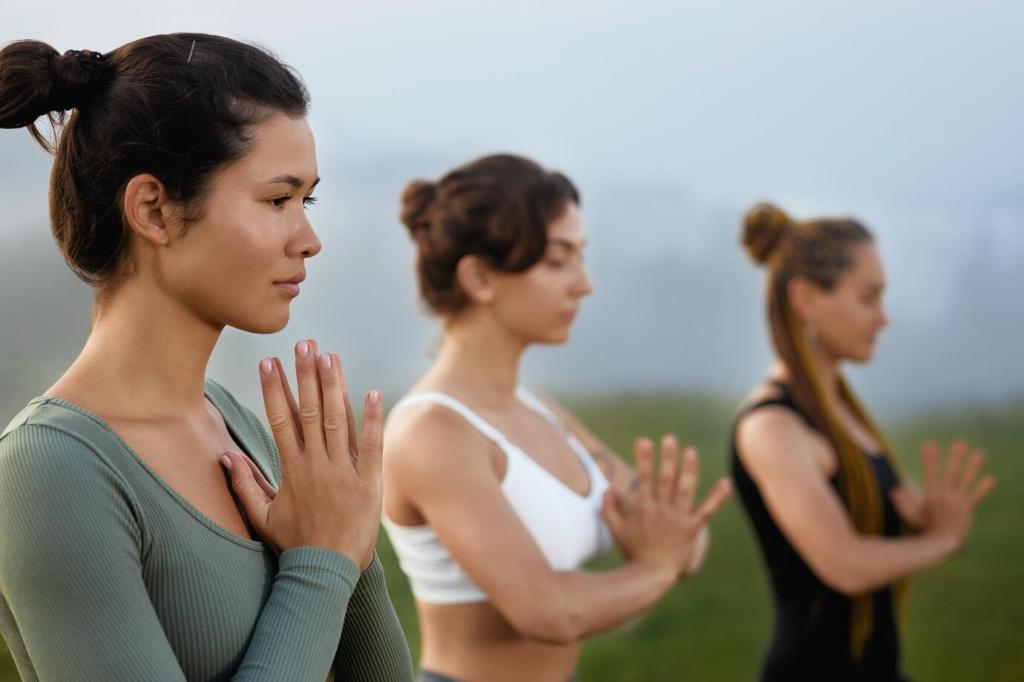
Creating a Peaceful Meditation Space at Home
Chosen theme: Creating a Peaceful Meditation Space at Home. Step into a calm that begins right where you live—nurturing clarity, softening stress, and building a daily sanctuary that makes returning to your cushion feel natural and irresistible.


Finding the Right Corner
Notice where morning light lands and how sound travels through your home. A quiet corner near soft, indirect light can reduce overstimulation. Test different spots for a week, journal sensations, then commit to the calmest nook.
Finding the Right Corner
A meditation space can live beside a bookshelf, under a window, or in a closet alcove. Use a floor cushion, a foldable mat, and a small tray for essentials. Minimal tools, maximal intention, reliable daily presence.
Designing for Calm: Colors, Textures, Materials
Color Psychology for Stillness
Soft earth tones, warm whites, and desaturated greens calm the visual field. Avoid high-saturation accents near eye level. Let your color palette recede, so breath and posture become the focal point of your practice.
Natural Materials That Ground
Wood, linen, cork, and jute quietly anchor the body. Studies suggest tactile textures can influence mood regulation. Let bare feet meet a woven rug; let fingertips rest on a wooden mala. Simple materials, steady presence, quiet joy.
Declutter as a Ritual
Research links clutter to elevated stress hormones like cortisol. Try a two-minute reset before sitting: return books, fold a blanket, clear surfaces. Subscribe for our tidy checklist that protects serenity without perfectionism or pressure.
Choosing Cushions and Benches
A zafu lifts hips above knees; a zabuton cushions ankles; a seiza bench supports kneeling with less pressure. Test heights using folded blankets first, then invest confidently. Share your setup tips to help fellow meditators experiment.
Gentle Alignment Cues
Think tall through the crown, soft at the jaw, shoulders melting down, and hands resting where elbows feel weightless. Micro-adjust every few breaths. My pianist father taught me: small, repeatable ease beats heroic stillness every time.
Accessibility and Comfort
Chairs are welcome. Wall support is welcome. Micro-movements are welcome. Your space serves your body, never the reverse. Comment with adaptations that help you practice longer, without pain or pressure to look a certain way.

Sensory Atmosphere: Light, Sound, Scent
Use warm bulbs around 2700K, a dimmer, or a paper shade for diffuse glow. Dawn simulators can ease early sessions. Candles feel sacred—practice safe placement. What light helps you exhale? Share your favorite evening setup.
Thicken quiet with rugs, drapes, and cushions. Try white noise or gentle nature tracks. A single bell to begin and end can anchor focus. Subscribe for our curated playlists designed to disappear into your breathing.
Lavender, cedar, or a single citrus note can cue calm; research suggests lavender may lower perceived anxiety. Prefer unscented days? Open a window and let clean air lead. Tell us your go-to aromatic ritual or none at all.
Green Air: Plants, Breath, and Freshness
Snake plant, pothos, and peace lily tolerate low light and variable care. Check pet safety if needed. Place one within soft focus—not a distraction, just company. Share your favorite green companion and how it changes the room.
Green Air: Plants, Breath, and Freshness
Crack a window before sitting; take three slow breaths facing the breeze. It’s a tiny ceremony that marks transition from busyness to presence. Do you notice energy shift with airflow? Comment with your seasonal adjustments.



Create a Meaningful Focal Point
An altar can be simple: a stone from a favorite beach, a small candle, a photo, a short poem. Mine includes a smooth pebble I found during a difficult year—steady, patient, beautifully ordinary.

Household Agreements
A door-hanger sign, a shared schedule, and gentle conversations reduce interruptions. Invite family to support your practice by defining quiet windows. Some include kids or pets for closing bell moments. Tell us what boundaries work at home.
